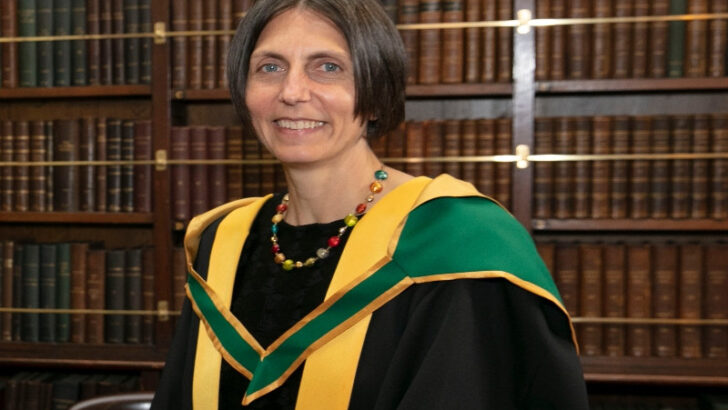A leading professor in the sociology of religion has said that the Church in Ireland has a “great opportunity” to bring the message of the Gospel and Christianity in an attractive way to new generations who “search for meaning” online.
Speaking to The Irish Catholic after the release of an Amárach poll showing a disconnect between young people and the Church, Gladys Ganiel, Professor in the Sociology of Religion at Queen’s University Belfast, said she saw opportunity. “I think with all these polls quite often people who are embedded in the institutional Churches are very worried. My perspective is that the period of history we are in for the Churches in Ireland is actually a great opportunity, because historically every time Churches or other types of religious organisations have sought social and political power, they have really messed it up,” Prof Ganiel said.
“So this is an opportunity, yes there is distrust in the institutional Church, but actually in terms of the message of the Gospel and Christianity… it is something that could be very attractive to people. And I think that’s what you see showing up in this poll,” she added.
Almost a quarter of young people follow ‘influencers’ online who share content of a religious or spiritual nature, an Iona Institute commissioned poll has revealed.
It also found that more than one in five people aged 18-24 (21%) watch content on YouTube that has religious and/or spiritual themes.
Prof. Ganiel told The Irish Catholic this points to a “greater search for meaning” among young people.
“Those young people are probably not going to go to Mass on a Sunday morning, but if there is a way to communicate with that generation – there is potential there,” Prof Ganiel said.
Highlighting the disconnect between the Church and young people, the poll revealed just 6% of 18-24-year-olds said they were regular Mass goers. A little more than half said they were Catholic but stated they were not regular Mass goers while 41% said they were not Catholic.
“There have been studies of the way Churches use social media and digital resources. And quite often the way they use them is not the way they are meant to be used. They are used in a top down, convey information type of way – that is not really how the influencers use them,” said Prof. Ganiel.
“If the institutional Churches start using digital media in an authoritarian way, that is not the way to engage [young people],” she said.
However, she warned of the pitfalls of online ministry, saying it “has its own problems” as it may not “encourage the type of community that Christianity tries to cultivate, so there has to be some sort of balance.
“If there were ways parishes and congregations could do both at the same time… it’s one thing being a social media influencer, it’s another to use social media in a way that will engage people and then get them to meet together in real life. With all of the debates about digital religion – especially coming out of Covid – I don’t think it can be the only thing.”
Prof. Ganiel said online faith communities are “very hard to sustain, it has to be blended with real person encounter. It’s quite a complex endeavour for religious institutions to adapt to digital media while at the same time encouraging the regular meeting of people in the physical world”.
She added that a blend of online engagement as well as ‘in person’ encounter “ultimately will be the most effective way for religions going forward. But it’s really a difficult thing to do, especially as religions are trying to balance meeting the needs of people at both ends of the age spectrum”.
While the research found 40% of Irish people held an unfavourable view of the Catholic Church, 46% agreed, to a greater or lesser extent, that Catholic teachings are still of benefit to society, with 32% disagreeing. Exactly half of all the people surveyed had a positive attitude towards Christianity in general – 28% were neutral.


 Chai Brady
Chai Brady Prof. Gladys Ganiel
Prof. Gladys Ganiel